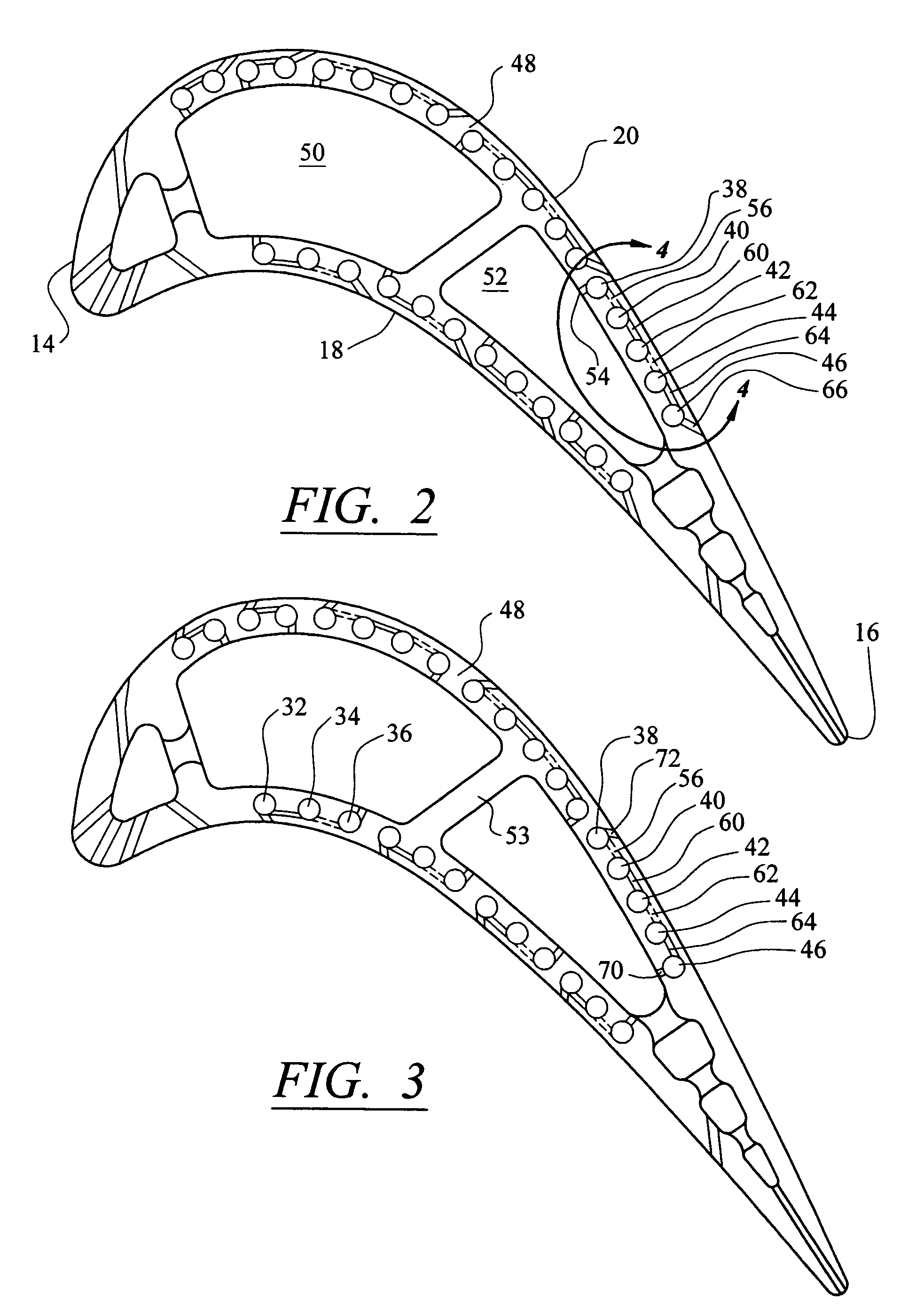Vortex cooling of turbine blades
a turbine blade and vortex cooling technology, which is applied in the direction of propulsive elements of rotary type, machines/engines, engine manufacture, etc., can solve the problems of low convective cooling effectiveness, difficult control of radial and chord-wise cooling flow, and the cooling construction approach has its downsides
- Summary
- Abstract
- Description
- Claims
- Application Information
AI Technical Summary
Benefits of technology
Problems solved by technology
Method used
Image
Examples
Embodiment Construction
[0025]While this invention is being described showing a particular configured turbine blade as being the preferred embodiment, as one skilled in this art will appreciate, the principals of this invention can be applied to any other turbine blade that requires internal cooling and could be applied to vanes as well. Moreover, the number of cells and their particular shape and location can be varied depending on the particular specification of the turbine operating conditions. The leading edge and trailing edge cooling configuration and technique are not apart of this invention and any well known techniques could also be utilized and as mentioned earlier the technique described in U.S. patent application Ser. No. 10 / 791,581 could equally be utilized.
[0026]A better understanding of this invention can be had by referring to FIGS. 1 through 5 which illustrate a turbine blade generally indicated by reference numeral 10 (FIG. 1) comprising the airfoil 12 having a leading edge 14, a trailing...
PUM
 Login to View More
Login to View More Abstract
Description
Claims
Application Information
 Login to View More
Login to View More - R&D
- Intellectual Property
- Life Sciences
- Materials
- Tech Scout
- Unparalleled Data Quality
- Higher Quality Content
- 60% Fewer Hallucinations
Browse by: Latest US Patents, China's latest patents, Technical Efficacy Thesaurus, Application Domain, Technology Topic, Popular Technical Reports.
© 2025 PatSnap. All rights reserved.Legal|Privacy policy|Modern Slavery Act Transparency Statement|Sitemap|About US| Contact US: help@patsnap.com



